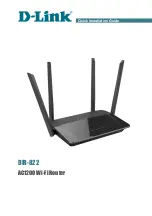
•
LLDP-MED capabilities TLV
Allows LLDP-MED endpoints to determine the capabilities that the connected device supports and has
enabled.
•
Network policy TLV
Allows both network connectivity devices and endpoints to advertise VLAN configurations and associated
Layer 2 and Layer 3 attributes for the specific application on that port. For example, the switch can
notify a phone of the VLAN number that it should use. The phone can connect to any switch, obtain its
VLAN number, and then start communicating with the call control.
By defining a network-policy profile TLV, you can create a profile for voice and voice-signaling by
specifying the values for VLAN, class of service (CoS), differentiated services code point (DSCP), and
tagging mode. These profile attributes are then maintained centrally on the switch and propagated to the
phone.
•
Power management TLV
Enables advanced power management between LLDP-MED endpoint and network connectivity devices.
Allows switches and phones to convey power information, such as how the device is powered, power
priority, and how much power the device needs.
LLDP-MED also supports an extended power TLV to advertise fine-grained power requirements,
end-point power priority, and end-point and network connectivity-device power status. LLDP is enabled
and power is applied to a port, the power TLV determines the actual power requirement of the endpoint
device so that the system power budget can be adjusted accordingly. The switch processes the requests
and either grants or denies power based on the current power budget. If the request is granted, the switch
updates the power budget. If the request is denied, the switch turns off power to the port, generates a
syslog message, and updates the power budget. If LLDP-MED is disabled or if the endpoint does not
support the LLDP-MED power TLV, the initial allocation value is used throughout the duration of the
connection.
You can change power settings by entering the
power inline
{
auto
[
max max-wattage
] |
never
|
static
[
max max-wattage
]} interface configuration command. By default the PoE interface is in
auto
mode;
If no value is specified, the maximum is allowed (30 W).
•
Inventory management TLV
Allows an endpoint to send detailed inventory information about itself to the switch, including information
hardware revision, firmware version, software version, serial number, manufacturer name, model name,
and asset ID TLV.
•
Location TLV
Provides location information from the switch to the endpoint device. The location TLV can send this
information:
◦
Civic location information
Provides the civic address information and postal information. Examples of civic location
information are street address, road name, and postal community name information.
◦
ELIN location information
Provides the location information of a caller. The location is determined by the Emergency location
identifier number (ELIN), which is a phone number that routes an emergency call to the local
public safety answering point (PSAP) and which the PSAP can use to call back the emergency
caller.
Consolidated Platform Configuration Guide, Cisco IOS Release 15.2(4)E (Catalyst 2960-X Switches)
59
LLDP, LLDP-MED, and Wired Location Service Overview
Summary of Contents for Catalyst 2960 Series
Page 96: ......
Page 196: ......
Page 250: ......
Page 292: ......
Page 488: ......
Page 589: ...P A R T VI Cisco Flexible NetFlow Configuring NetFlow Lite page 509 ...
Page 590: ......
Page 619: ...P A R T VII QoS Configuring QoS page 539 Configuring Auto QoS page 645 ...
Page 620: ......
Page 750: ......
Page 1604: ......
Page 1740: ......
Page 2105: ...P A R T XII Configuring Cisco IOS IP SLAs Configuring Cisco IP SLAs page 2025 ...
Page 2106: ......
Page 2118: ......
Page 2164: ......
















































